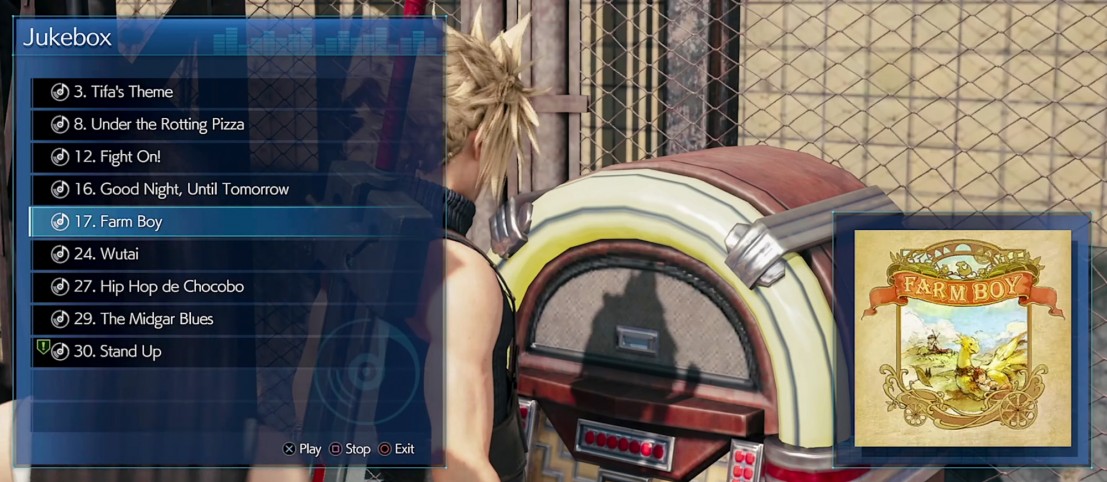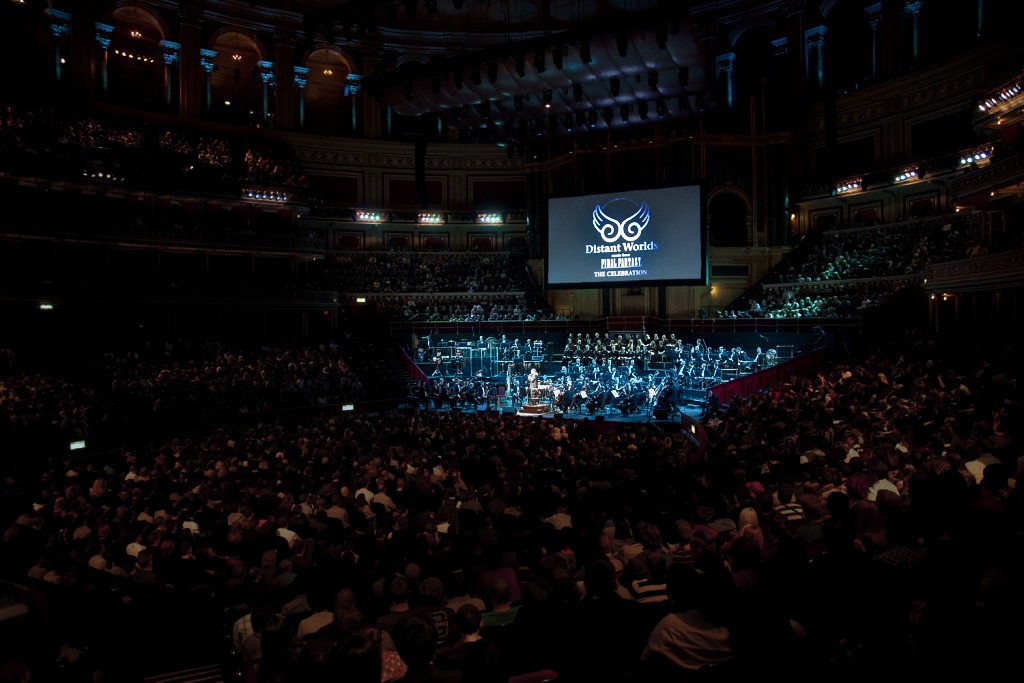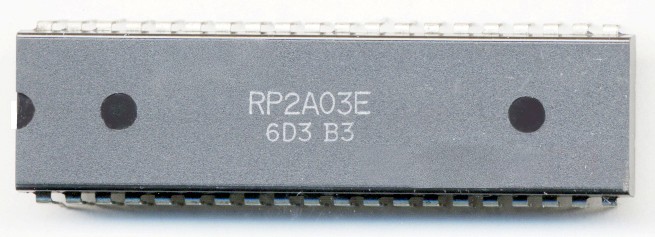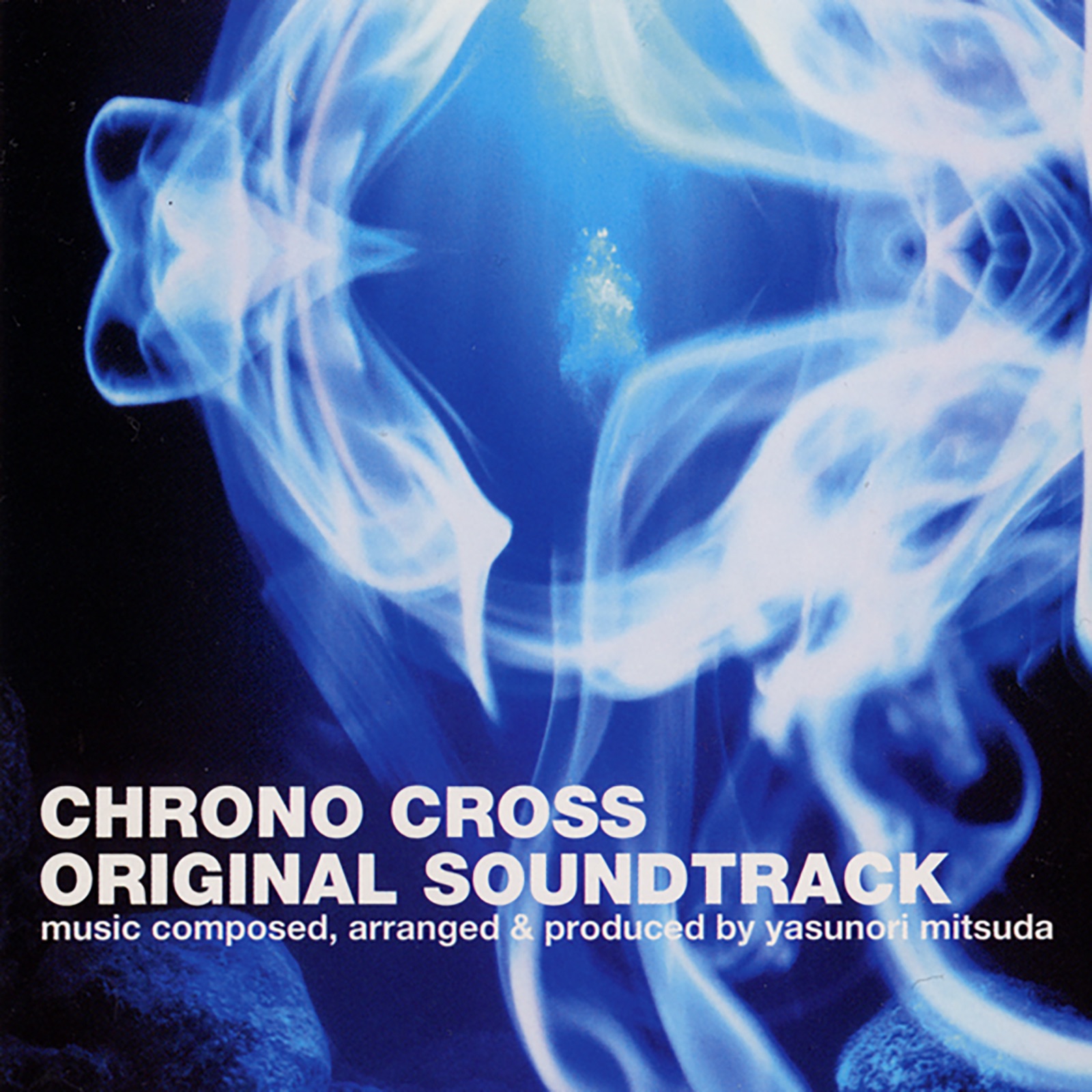Ff Music Its Just the Landing Over Again

Influenced past Western function-playing games like Ultima, along with the Dungeons & Dragons tabletop game, the Final Fantasy series has grown from its humble 8-chip beginnings in 1987 to become one of the most well-known gaming series on the planet, complete with books, Hollywood movies, TV show spin-offs and more than.
Y'all, the star of the show, journey through a fictional fantasy/sci-fi world, amassing allies to somewhen save the earth and beat the big bad, and there's often some crystals, chocobos (behemothic yellow chickens to yous and me) and a guy called Cid along the way.
Bated from that, the mainline games aren't continued to each other, and so you won't have missed annihilation from not playing the first 14 games if you decide to leap into the latest entry. The aforementioned can be said of the serial' scores - they share a few common elements, such as the Prelude, Opening, Fanfare and Chocobo themes, but pretty much stand entirely on their own.
Then what makes this game series' soundtracks so special? The lead composer for many of the Final Fantasy games, Nobuo Uematsu, is the best place to start.

Arguably one of the greatest videogame composers, the self-taught Uematsu (pictured above in a recent documentary by Square Enix) joined Square in 1985 in his mid 20s as a stop gap before intending to move on to flick music production. However, after composing for games like Genesis, Male monarch's Night and Aliens, he was soon asked by director Hironobu Sakaguchi to write for Last Fantasy. The game, released on the Famicon/NES in Dec 1987, unexpectedly get a major commercial success and Uematsu went on to provide total scores for the next eight games; co-composing on the tenth (2001) and eleventh entries (2002).
After forming The Blackness Mages (2002-2010), a embrace band specialising in Final Fantasy songs in hard stone-/prog-rock style, Uematsu departed from total-time work at Foursquare Enix in 2004, forming his production company Smile Please, and and then a tape label, Dog Ear Records, in 2006. After The Black Mages disbanded in 2010, he established a successor band, the Earthbound Papas, which covers Final Fantasy and other game series tracks. He withal contributes every bit a freelancer to several developers including Square Enix, virtually recently working on the chief theme "Hollow" for the Final Fantasy Vii Remake.

The long-awaited Final Fantasy Seven Remake, released in April 2020, features adaptive music, taking Uematsu'south original melodies and calculation instruments and arrangements, as well equally several new compositions. Well-nigh remarkable of all is that though the game only covers a quarter of the original story (more than remake parts are planned), the developers included tracks from across the whole of the original FFVII every bit collectable items throughout.

One of the Concluding Fantasy soundtracks' lasting impacts have been the many video games concerts they've spawned. The success of the serial' official concert series (including the Beloved Friends, Distant Worlds, Final Symphony tours), which have featured invitee appearances from Uematsu and toured worldwide, have had a major office in popularising video game concerts (pictured above: Distant Worlds Concert, London). Part of this mainstream acknowledgement arrived in 2012, when Uematsu's "Aerith's Theme" from Concluding Fantasy Seven became the first of two videogame songs to exist included in the Classic FM hall of fame.
Uematsu's influences are every bit wide-reaching every bit the games themselves. You take the utilise of cinematic leitmotifs in the vein of John Williams, James Horner and Hans Zimmer, but also input from classical composers similar Bach, Chopin, Debussy, Tchaikovsky, Ravel and Stravinsky, all of which are topped off by a honey of 70s prog rock, jazz, and Celtic music.
Yes, you heard that correct - prog-rock. Uematsu lists Yes, Led Zeppelin, Pink Floyd, Emerson, Lake and Palmer and Male monarch Crimson as important influences for some of his themes, forth with other 70s pop and stone artists like The Beatles, Elton John, Jimi Hendrix and Kraftwerk. And once you lot know that, you'll be hard pressed to non hear echoes of those powerhouses, whether information technology's the hypnotic riffs and synths, the folk-style, melancholic acoustic numbers, or the catchy, jazzy percussion.
Dissimilar many other fantasy games, which lean heavily on classical composers, such every bit the Dragon Quest series (Koichi Sugiyama), Uematsu's honey for stone, pop and electronica definitely shines through and adds a more modern twist to the genre's musical conventions.
Aside from influences, ane of his key strengths are his memorable graphic symbol themes, not only channelling sentimentality and emotion to great effect, but re-used and remixed in the form of leitmotifs resurfacing during key narrative points. Finally, he has the uncanny power to produce incredibly tricky melodies, possibly owed to the hardware restrictions he faced when commencement composing.

An piece of cake thing to forget today is the technical mastery required to produce engrossing songs on early consoles like the Famicon/NES (pictured in a higher place: the Famicon/NES 1.79 Mhz 8-bit microprocessor). The audio on the Nintendo Entertainment System was restricted to a mere five unproblematic channels - two pulse waves (melodies), triangle wave (simple bass/percussion), white noise (metallic effects/percussion) and digital sample (audio/effects), plus retentivity limits. The restrictions meant many early on tunes were heavily melodic, though sound programmers used a lot of audio tricks to get around the limitations, such as using arpeggios to simulate background chords.
There was a massive leap forward with the Super Famicon/SNES (1990), with channels increased from five to 8, larger memory assuasive for longer, more varied tracks, and more control over channel volumes, assuasive for a more natural fade out of notes. An even greater step came with the introduction of CDs on consoles like the PlayStation (1994) – 24 channel digital sound arrived, and the technological barriers between game composers and musicians were finally been torn downwards.
Despite all these the restrictions, Uematsu managed to produce stunning tracks with a lot of multifariousness, and most impressively of all, many are still being used today, admitting information technology at a higher bit-charge per unit!
And then let's head dorsum to where it all began...

Final Fantasy I (Famicon/NES, 1987)
This groundbreaking role-playing game may have been limited in the scope of its graphics, size and story, but its music was remarkably impressive. In Concluding Fantasy I, y'all can encounter the melodic Deoxyribonucleic acid of Final Fantasy music – the first iterations of some of the most long-running themes in computer game history - like the upbeat "Chief Theme", the triumphant "Fanfare" and the sublime "Prelude".
The opening "Prelude" – the offset thing you lot would accept heard after rushing dwelling to try out your latest cartridge – is a masterpiece of minimalist audio work. Composed in a last minute dash to fill a newly-added intro scene, this 52-second slice went on to be mainstay of the serial for over xxx years. The minimal, yet haunting Bach-esque arpeggio does its all-time to mimic a harp, with two pulse channels, i purposively one/8s late to give the impression of a delay effect.
Check all the honourable mentions in our Best of Final Fantasy I Playlist.

Concluding Fantasy Two (Famicom, 1988)
The 2nd Concluding Fantasy is often overlooked both in terms of the game (with its divisive level system) and its accompanying score, not least for the fact it was never initially released outside Nihon. That said, it shows Uematsu becoming more than familiar with the hardware, with a greater range of instruments and audio tricks, giving the feel of a more orchestral sound.
This stirring, Baroque-style rails, which builds to a triumphant fanfare, is eye stage in the second entry in the serial. It's besides rather reminiscent of much of the original Star Wars soundtrack (itself influenced by Holst, Eglar and more), which given the plot similarities in the story, may not be such a coincidence.
Check all the honourable mentions in our Best of Final Fantasy Two Playlist.

Final Fantasy III (Famicom, 1990)
Much like its predecessor, only receiving a Japanese release has stifled the popularity of this entry, though Square Enix did eventually remake the whole affair in 3D some 16 years afterwards on the Nintendo DS. Our loss indeed, as FFIII is undoubtedly one of the high points of NES-era scores. Not, only does Uematsu serve up circuitous melodies and harmonics, but introduces character themes, or leitmotifs – where pocket-size sound phrase or melodies would back-trail a character'southward scenes. This concept, long popular in films, would soon become an a major function of the series, likewise as video game soundtracks in general.
This peaceful, melancholic slice has the honour of being the commencement grapheme theme in the series, for the ill- fortuned Maiden of the Temple of Water. While it may be a prepare of unproblematic arpeggios and a delicate melody line, at that place's a stunning simplicity, and information technology set the stage for similar contemplative graphic symbol tracks in time to come games, such as the themes for Rydia (FFIV), Relm (FFVI) and Aerith (FFVII).
Cheque all the honourable mentions in our Best of Concluding Fantasy III Playlist.

Final Fantasy 4 (Super Famicom/SNES, 1991)
Final Fantasy 4, the first entry of the Super Famicon/SNES was a major stride towards what the series would be known for today - intriguing plots, dramatic twists and character development, all helped by the better graphics and audio capabilities of the new machine. The bass lines audio better than ever, and were even given a shout out in the comic and feature film of Scott Pilgrim vs. the World (Edgar Wright, 2010). (Concluding Fantasy Iv was known as Final Fantasy 2 in the United states as it was the second in the serial to be released in that location).
Uematsu continued to pioneer with more leitmotifs, not simply for characters but also themes, such as the stunning "Theme of Dearest" for both Cecil and Rosa , while the increase in sound channels meant a step forwards towards the realistic sounding instrumentation. The Irish Celtic influences are strong on this score, with more harps and pipes – Uematsu even equanimous a FFIV Celtic arrangement album, Celtic Moon, in the same yr as the game. More than recently, William Carlos Reyes has produced a stunning classical guitar organisation cover anthology of some of the top tracks which is essential listening.
Amongst a set of stunning tracks similar "Troian Dazzler", "Welcome to Our Boondocks" and "Within the Giant", this was i of the toughest picks, but it can only be "Battle With The Four Fiends (The Dreadful Fight)". Much like the tearing boxing it accompanies, this amazingly tense number throws everything at the listener — thumping kettle drums, chaotic strings and booming horns, all topped off with a speedy, however funky bass riff.
Check all the honourable mentions in our Best of Terminal Fantasy Four Playlist.

Final Fantasy V (Super Famicom, 1992)
Despite being often ignored due to its muddled story and high difficulty, the 5th entry's score takes the fourth'southward push into character themes and takes it further with its prominent main title runway, as well every bit experimenting with more rock influences for the boxing sections, most famously on "Battle on the Large Bridge" and "The Last Battle". Again, the Us and Europe missed this on its initial release, which was somewhen available every bit part of an album on the PlayStation in 1999.
This cheerfully upbeat anthem is a bout-de-strength of opening tracks, with its master melody echoed through the game, such as in "Four Hearts", "The Solar day Will Come up" and "Lenna'south (Reina's) Theme", with its superb and surprisingly realistic slide bass riff. [Ignoring the riotously fun prog-rock-styled "Clash on the Big Bridge" is just a Sin I'll have to live with].
Check all the honourable mentions in our All-time of Terminal Fantasy V Playlist.

Final Fantasy Half-dozen (Super Famicom/SNES, 1994)
With its large cast, detailed plot and vast world, the terminal second entry in the series was at the tiptop of its game, and had a score to match. Pushing the hardware to its limits, you become a full experience of what 'cinematic' game soundtracks could sound like before CD sound arrived, and the game even features an opera! While you might exist tempted to try out the orchestral re-arrangement, stick with the original 16-bit.
The star of show has to be the Baroque-inspired, organ-led chaos of "Dancing Mad", which plays as y'all fight the boxing the crazed final boss that is Kefka. Carve up into 4 movements, it runs for an incredible 18 minutes – about unheard of at time due to retentivity limits. While the outset 3 movements build suspense and lend heavily on classical tropes, the last movement ditches Bach for prog-stone goodness with a thumping bass, trippy riffs and fast-paced percussion.
Check all the honourable mentions in our Best of Last Fantasy 6 Playlist.

Concluding Fantasy VII – (PlayStation, 1997)
The dauntless new world of 3D graphics, CD audio and Full Motion Video (FMV) ushered in arguably the about famous Terminal Fantasy, number VII. For many in the U.s. and Europe, this was their outset Concluding Fantasy, and what greater way to be introduced to Uematsu. While the score is proficient in matching the story'due south rollercoaster of emotions, with countless low-cal-hearted, cornball and inspiring songs, it is undoubtedly the serial' darkest, well-nigh ominous soundtrack. On tracks like "Mako Reactor", "Shinra, Inc" and "Those Called Past the Planet", Uematsu plays upward the dramatic, with menacing brass bells and heavy percussion all adding to a terrifying sense of foreboding.
And of form, we tin't forget "Ane Winged Angel", the grandiose classical rock opera containing the series' outset vocal runway – a booming latin chorus dedicated to the antagonist. FFVII's incredible success, with spin-off titles and films, which left fans hungry for a remake, finally released in April 2020 on the PlayStation 4.
Completing a journeying he began with his get-go grapheme theme for "Elia, the Maiden of Water" back in 1990, Uematsu reaches the apex of this reflective style of song with "Aerith's Theme". Taking parts of the operatic "Aria di Mezzo Carattere" from Concluding Fantasy Half-dozen, this bloodshot lullaby flits between major and minor keys, balancing optimism and nostalgia with darker tones alert of what'due south to come. If there's 1 track that is inextricably tied to the moment in the game it's most famous for, this is it.
Check all the honourable mentions in our Best of Final Fantasy 7 Playlist.

Terminal Fantasy 8 – (PlayStation, 1999)
This rebellious sibling of the series threw out the tried-and-tested magic system, ditched the world-ending stakes and went for a more realistic romance drama, and its music is no different. The graphic symbol themes which had become a cornerstone of the series were discarded for general emotional leitmotifs.
There'southward a move towards pop, jazz and electronica, as well as orchestral music, while lengthy FMV sequences allowed for fifty-fifty more cinematic sound and visuals. Nosotros likewise see the start commercial popular ballad by a famous artist, Faye Wong, in the form of "Eyes On Me", a feature that would get a hallmark of later games. [In that location'due south even an side quest to form a ring and play a festival].
Despite some superb activeness scene pieces similar "The Landing", "Never Look Back" and "Only A Plank Betwixt One and Perdition", and the unforgettable final boss themes, the ultimate runway has to be the whimsical, serene and jazzy "Fisherman's Horizon". A pianoforte and woodwind seaside theme that lives and breathes the ocean, it'southward the perfect accompaniment for the calm before the storm in terms of the plot.
It's also a kindred spirit to the breezy, tropical island themes similar "Arni", "Sailing", and "Guldove" that young man Square composer Yasuni Mitsoda produced for Chrono Cantankerous, released only nine months subsequently.
Check all the honourable mentions in our Best of Final Fantasy 8 Playlist.

Final Fantasy Nine (PlayStation, 2000)
A love-letter to the foretime era of traditional fantasy FFs and RPGs, this title leans heavily on Renaissance instruments ("A Identify to Phone call Domicile"), besides as taking influence from everything from Flamenco ("Vamo'alla flamenco"), ragtime ("Dark Urban center Treno"), and ambient music ("Water ice Cavern").
This project was Uematsu's largest to date, comprising an incredible 160 tracks, unheard of at the time, and may be behind Uematu's stepping back on the next championship. Overall, FFIX'due south score revels in its nostalgia, non merely for the past in terms of arrangements, simply likewise in the inclusion of throwback nods to earlier tracks from the series. Equally with Eight before, nosotros see a vocal ballad every bit a atomic number 82 theme song, this time "Melodies of Life", sung by Emiko Shiratori, though it doesn't feel too out of place as the general tune appears throughout as a romance leitmotif.
This remarkably difficult-hitting canticle takes an already emotional office of the game to new heights with its synth bass and banjo intro slowly building to a rousing distorted guitar and synth choir filled chorus. Absolutely fitting for a scene where the antagonist painfully overcomes deepest despair after a gut-wrenching revelation to eventually rejoin his abandoned friends and battle onward together.
Check all the honourable mentions in our Best of Terminal Fantasy Nine Playlist.

Final Fantasy X – (PlayStation ii, 2001)
Launching on the PlayStation 2, the tenth game, the start non entirely composed by Uematsu, boasted entirely 3D graphics, motion capture and most chiefly – vocalization interim. The introduction of vocals may take brought a new level of realism, but meant that the soundtracks began to take a stride back. With characters' voices jostling for attention, the score is forced to be more than minimal and can no longer accept centre phase during dialogue scenes.
That said, the soundtrack, co-equanimous past Nobuo Uematsu, Masashi Hamauzu and Junya Nakon does not disappoint. Uematsu brings a memorable set of character and battle themes, while Hamauzu in particular crafts ambience, synth-led atmospheric pieces that fit the Ryukyuan-inspired setting perfectly. The vocal theme, "Suteki da ne?" (Isn't It Wonderful?) comes courtesy of Amami folk vocalist RIKKI, and is easily Uematsu's best vocal popular vocal to appointment.
This fan fave is piano ballad simplicity at its finest. The relaxed, waltz-similar tune treads similar territory as Aerith'south theme, ebbing between optimism and sorrow, but sustaining momentum. A perfect accompaniment for the in media-res opening with characters pending their final journeying, and well used throughout the game in "Movement in Green", "A Fleeting Dream", and the sublime string version in the "Ending Theme".
Bank check all the honourable mentions in our Best of Concluding Fantasy X Playlist.

Of course, there are several more than principal entries in the series with outstanding soundtracks (FFXII in particular), but it's a fitting conclusion to the bulk of Uematsu's piece of work. We as well can't ignore his stellar piece of work with Final Fantasy creator Hironobu Sakaguchi on Chrono Trigger (1995), Blue Dragon (2006) and Last Story (2011), the offset of which he worked on with fellow Square composer Yasunori Mitsuda. Mitsuda deserves a whole commodity for himself, just go check out his Xenogears (1998) and Chrono Cross (2000) soundtracks for some stunning traditional and Celtic-inspired electronica. For a more recent recommendation, endeavour out the Keiichi Okabe and co's spectacular scores for Nier (2010) and Nier: Automata (2017).
Will we ever see another game composer as prolific as Uematsu? It's a tough telephone call, but I'thou hopeful. Even so, I do remember that his talent for a powerful, catchy melody was in some office a result of the technical restrictions he faced. With just a few sound channels up your sleeve, you become creative, and that's exactly what happened here over the course of the games. That, and the fact many computer games were substantially silent movies until the 2000s meant sound took centre phase, and was lucky enough to back up the story beats with emotion to fill up in the text-based dialogue scenes. But regardless of whether you choose to listen to the original audio versions, orchestral rearrangements, piano or guitar collections or electronica remixes, yous'll exist in for a well-deserved treat.
Source: https://www.thelineofbestfit.com/features/articles/nobuo-uematsu-music-final-fantasy
0 Response to "Ff Music Its Just the Landing Over Again"
Post a Comment